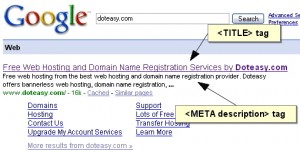
Your current team can’t handle any extra work. You’ve exhausted your process automation opportunities. You’ve got no choice but to bring in a fresh face.
You could hire a specialist, but they can be expensive and limited in the work you can hand off. You need to hire a virtual assistant.

Virtual assistants are fantastic low-cost solutions for taking care of the work you can’t automate. By handing off your easier tasks you can focus on what matters, like the direction of your website or the next feature for your app.
There are also pitfalls to hiring a virtual assistant. They could be a bad fit for your company or unable to carry out your tasks. Plus, if you hire a virtual assistant too early or for the wrong tasks, you can heavily damage your business’ processes and general structure.
That’s why we here at Process Street have created this post on how to assess, hire, and onboard a virtual assistant. We used these methods to find and hire our current assistants, who help us keep on top of our content promotion and social media management, saving us countless hours each week.
Stick around to learn how to:
- Decide on which tasks to delegate
- Know if you should hire a virtual assistant at all
- Choose and use your hiring method
- Onboard them for success
Make a list of tasks to outsource
Before even starting to hire a virtual assistant you need to make a task list to see what you can delegate. Chris Ducker (CEO of Virtual Staff Finder) uses a brilliant technique of sorting tasks into three columns to help him decide what to delegate.

Whether you create a process, document or scrawl on paper, separate out:
- The tasks that you hate doing
- The tasks you struggle to do (you don’t have the experience or knowledge)
- The tasks that you, as a business owner, know you shouldn’t be doing
These are all options to hand down to a virtual assistant, as each is a drain on your resources which could be better spent doing something else.
The tasks that you hate doing will probably take more time and be a lower quality than if you were to hand it off. It’s also only sensible to get someone more experienced than you to do the tasks you can’t (eg, video editing). However, the final column is the hardest (and most vital) to get right.

You may well enjoy some of the tasks that you know you shouldn’t be doing – it’s only natural to be more invested in some areas than others. However, your task as a manager, CEO, and high authority figure in general is to do what’s best for your product and customers. You can’t scale if you’re clinging on to a time-consuming task which someone else could do just as well or better.
Decide if you should hire a virtual assistant
Once you have your task list you can weigh up the pros and cons of hiring an extra pair of hands, along with the relative savings you’ll make.
First, consider the value of the tasks in your “to outsource” list. Think about them in terms of importance, specialist nature, and the resources involved. For example, it’s important to have your accounts and finances in order, but bookkeeping takes too much time to do yourself and doesn’t require a lot of specialist knowledge. This makes it prime for giving to a virtual assistant.

Estimate how long it will take to train a VA up to the standard or style you want. Assess any risks to sensitive data. Price up how much you currently spend on each task (resources, time, and labor costs) to get an idea of your budget, and how much you can save by hiring a cheaper worker.
Finally, think about any time zone differences between you and who you’ll need to employ. If you’re running around New York all day and need someone to help organize your meetings, it’s best to hire within the same time zone (if not in the same city). This, in turn, will affect the pay grade of your VA and therefore how viable the whole thing is.
To summarize, weigh up:
- How specialized your tasks are
- How important they are
- How much you’re currently spending on those tasks
- Any time zone or location limitations
- How much you can save by hiring a cheap VA
- Security risks
- Training and onboarding time
While it might not be the magic pill many thought it to be after reading the 4-Hour Work Week, knowing the above will show you the relative benefits of hiring a virtual assistant and help you come to a decision.

If you’re still not sure, remember that hiring someone part-time is more than possible, and is a great way to test the waters. This lets you both to see if an assistant is right for you and for whether a candidate is a good fit for your company.
Choose your method of hiring
Once you decide to hire a virtual assistant you need to choose how you’re going to go about it.
You can:
- Do it yourself
- Use a recruiter
- Use a VA service
Doing it yourself will save you a little money, but also limit the scope of your job posting and involve more work on your end. In the long run the saving isn’t usually worthwhile (or all that significant), but, if you’re on a shoestring budget and have the time, doing it yourself by posting on sites like Upwork and AngelList should land a couple of qualified candidates.
Meanwhile, recruiters like Virtual Staff Finder can be employed to do some of the heavy lifting for you. These will scout out candidates (usually doing preliminary checks to meet your requirements) before passing them on. This is the best of both worlds, giving you full control over the individual you hire, but removing the initial work searching for candidates.

Finally, VA services like Tiger and Zirtual are pretty much your “time is more precious than money” option. You pay the company, who provide a virtual assistant for you to work with, who is usually employed by them. Essentially, you’re outsourcing your tasks to one of their workers.
Run through your hiring process
You’ve decided how you’re going to hire your virtual assistant and what tasks they’ll work on, so now it’s time to run through your hiring process and get them on board.
This section will vary depending on your requirements and method, but make sure that you stick to a documented hiring process so that every candidate is assessed to the same level. This also makes your applicants easier to track, as you can follow their progress or (as we do) get them to work through a process of their own.
As a rough guide, you’ll want a set method for:
- Creating a job description
- Performing a background check
- Screening candidates efficiently
- Hiring the candidate
- Onboarding them
Again, the key here is having a consistent approach to every candidate. If you use a VA service then some of the preliminary checks (meeting your requirements, etc) will have been taken care of, but every candidate needs to have the same measures in place to judge their suitability.
At its simplest, your hiring process could be no more than “write job description, post description to sites/agency/VA service, vet candidates, hire most suited”. Still, don’t forget that you’re not just marking them on ability – being a cultural fit for your company is also important.
There’s little more demotivating than working with clashing personalities, so remember to assess the candidates as to how they will fit in, and whether they could add anything to your culture. Admittedly, this isn’t as important as with full-time employees (a VA working 10 hours a week will cause fewer problems than a permanent teammate), but it’s worth considering.
Onboard them thoroughly
Onboarding is crucial when hiring a virtual assistant, no matter how benign the task you’re handing off. An effective onboarding process will help to train them faster, increase their productivity, strengthen their ties to your team and culture, and all-around up reliability and performance.
Like with your hiring process, the key to onboarding effectively is to document your processes, giving a consistent, monitored approach while letting you eliminate problems in your workflow. In general, however, there are three key points to remember when onboarding your new virtual assistant.
Centralize your information
It’s common sense that, in order to do the tasks you’ve assigned, the new VA needs to have access to the relevant resources. Hence why you need to check that any and all relevant information is available to them with time to spare.

Do they need to go through a HTML course or handbook before starting? Make sure they’re sent the login details or file. Give them permission to anything they will need to access before they need to use it. In general, do everything you can to let them crack on and do their job come their first day.
One of the best ways to do this is to apply the same policy to your current team – get everyone to save their work on a shared cloud storage platform so that, should anything from a collaboration opportunity to an emergency arise, everyone can access everything they need to.
Document your processes
I’ve mentioned this a couple of times already, but the best way to make sure that everyone knows what to do, how to do it, and track their progress is to document your processes. This limits the chance for human error (steps can’t be forgotten), helps to onboard employees with new tasks (instructions are in front of them), and increases accountability, since everyone can see what they need to be working on.
Whether you use Process Street to manage your processes or a physical booklet, make sure that you have them documented somewhere to refer back to.
Encourage an inclusive culture
It’s all too easy for a virtual assistant to become alienated to your company, limiting their motivation and potentially their productivity as a result. Hence why you need to make sure that they are introduced to and included in your company culture.
If your team has any quirks or regular events (our marketing team posts random gifs each morning), introduce the virtual assistant to them and – without being forcing it – encourage them to join in. Announce their hire to your team to encourage a warm welcome and get conversations started with your existing employees.
This might seem sentimental (“why make the effort for a 5-hour-per-week VA?”), but it has very real benefits when it comes to collaboration. Having an inclusive culture will make them more comfortable with reaching out to your team should they need help on something – they’ll be familiar with the humans behind your Slack names, making the thought of messaging them far less daunting.

Streamline your workload and focus on what matters
Virtual assistants are a brilliant way to save money by handing off work which you neither have to do nor can automate. However, it’s important to remember that you’re employing a person and not a cost-cutting robot.
Onboarding doesn’t end after the first day, week or even month of employment. You should always be checking to make sure that your VA has everything they need to efficiently do the tasks you’ve assigned them, and that they are as much a part of your team as your full-time staff.
Follow the steps outlined above, however, and you’ll be well on your way to a thriving relationship with your VAs.
Have any tips for hiring or integrating VAs? I’d love to hear from you in the comments below.
Business & Finance Articles on Business 2 Community(112)
Report Post







